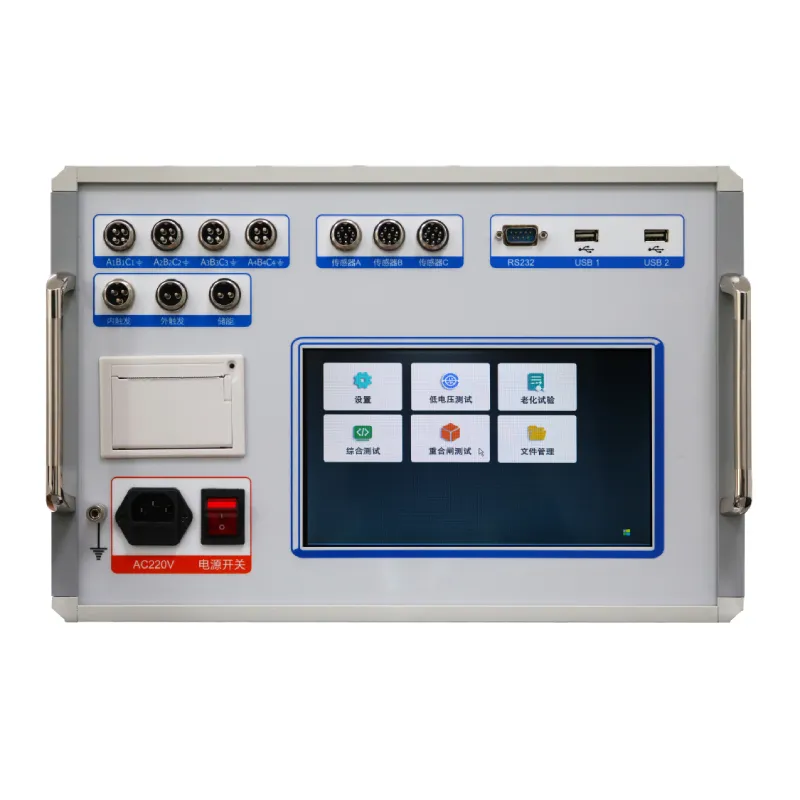 English
English


types of transformer testing pdf
Types of Transformer Testing
Transformers are essential components in electrical power systems, serving to step up or step down voltage levels and ensuring the efficient transmission of electricity. To maintain their reliability and performance, various testing methods are employed throughout the lifecycle of a transformer. In this article, we will explore the different types of transformer testing, each designed to assess specific aspects of a transformer’s performance, safety, and operational integrity.
1. Routine Testing
Routine testing is conducted on every transformer before it is commissioned and operational. These tests are standardized and ensure that the transformer complies with specified standards and operational requirements. Key routine tests include
- Winding Resistance Test This test measures the resistance of the transformer windings to ensure they are within acceptable limits. High resistance might indicate poor connections or faults in the windings. - Transformer Turn Ratio Test This test determines the ratio of the number of turns in the primary winding to the number of turns in the secondary winding. It helps verify that the transformer has been manufactured according to specifications.
- Insulation Resistance Test This evaluates the insulation condition of the windings. A high insulation resistance value indicates that the insulation is in good condition and able to withstand operational voltages.
2. Type Testing
Type testing is performed on a transformer model, rather than on individual units, to verify that a design meets relevant industry standards. This testing is crucial for new designs or technologies. It includes
- Temperature Rise Test This measures the temperature increase in the transformer under load conditions. It ensures that the transformer can operate within safe temperature limits over its lifespan.
- Short-Circuit Test This test assesses the transformer's ability to withstand faults. By simulating a short circuit, the test determines how the transformer handles extreme electrical stress.
- Lightning Impulse Voltage Test This test ensures that the transformer can withstand lightning strikes and surges. It assesses the insulation's ability to handle high-voltage spikes.
Commissioning tests are conducted after installation and prior to the transformer entering service. They are crucial for verifying that the transformer operates correctly and is safe for use. Important commissioning tests include
types of transformer testing pdf

- Power Factor Test This measures the power factor of the insulation system, which indicates the quality of the insulation, thus highlighting potential issues like moisture ingress.
- Sweep Frequency Response Analysis This test helps identify mechanical or electrical faults by analyzing the frequency response of the transformer's windings.
4. Maintenance Testing
Routine maintenance testing is essential for ensuring the long-term reliability of transformers in operation. These tests are typically carried out periodically and include
- Dissolved Gas Analysis (DGA) This is a diagnostic test to detect the presence of gases generated by potential faults within the transformer oil. By analyzing the types and concentrations of gases, technicians can identify issues such as overheating or arcing.
- Frequency Response Analysis (FRA) This test helps detect changes in the transformer's winding structure and alignment over time, which can be indicative of potential failures.
5. Diagnostic Testing
In the event of a failure or unexpected behavior, diagnostic testing helps identify specific issues affecting transformer performance. It includes
- Thermal Imaging This non-invasive method uses infrared cameras to detect hot spots due to high resistance connections or overload conditions, allowing for early intervention.
- Partial Discharge Testing This method identifies localized dielectric breakdown in the insulation system, which can signal deterioration or defects that may lead to failure.
Conclusion
Each type of transformer testing serves a unique and crucial purpose, from routine checks ensuring compliance and safety to detailed diagnostic tests aiming to predict and prevent failures. By understanding and implementing these various testing methods, utilities and engineers can enhance transformer effectiveness, minimize downtime, and ensure reliable power delivery. Regular maintenance and testing not only extend the lifespan of transformers but also contribute to the overall efficiency and safety of power systems.
-
Differences between open cup flash point tester and closed cup flash point testerNewsOct.31,2024
-
The Reliable Load Tap ChangerNewsOct.23,2024
-
The Essential Guide to Hipot TestersNewsOct.23,2024
-
The Digital Insulation TesterNewsOct.23,2024
-
The Best Earth Loop Impedance Tester for SaleNewsOct.23,2024
-
Tan Delta Tester--The Essential Tool for Electrical Insulation TestingNewsOct.23,2024





